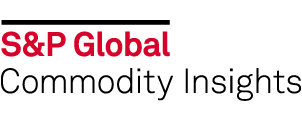
Download Report IHS CEH Report : Polyvinyl Chloride Resins (Chemical Economics Handbook 2019)
PDF by S&P Global Commodity Insights; IHS Markit
Information
Format: PDF Language: English Pages: 139 Publisher: S&P Global Commodity Insights; IHS Markit Publitshion date: 2019 ISBN: 111198
$49
Delivery time: Maximum 24 hours
Description
Polyvinyl chloride, more commonly known as PVC, is the third most widely produced synthetic polymer, after polyethylene and polypropylene. PVC is part of the vinyls chain, which also comprises EDC and VCM. PVC resin grades can be used for rigid and flexible applications. The rigid grades of PVC are used in construction for pipe and in profile applications such as doors and window frames. It is also used for bottles, other nonfood packaging, and credit cards. PVC resin can be used in flexible applications by the addition of plasticizers. In this form, it is also used in wire and cable insulation, imitation leather, signage, inflatable products, roofing membranes, and many applications where it replaces rubber.
PVC resin can also combine with many additives, yielding PVC compounds that are then converted into a wide variety of forms, such as pipes, fittings, profiles, tubes, windows, doors, sidings, wire, cable, film, sheet, and flooring. This ability, together with features such as durability, nonflammability, resistance to chemicals and oil, mechanical stability, and ease of processing and molding, means that PVC is a competitive and attractive option for many end uses in the construction and infrastructure, agriculture, electrical products, and healthcare industries. Thus, although its end-use portfolio has moved toward construction applications and away from many consumer items, PVC’s long-term future is secure.
The vinyls industry is a mature sector with a long history. Technology, production volume, environmental footprint, and cost have improved over time with upgrades in safety and product quality. Technological innovation continues to occur and is focused primarily on cost-competitiveness, since vinyls production is a truly global business, and manufacturers must be competitive both within their own regions and across the world. International PVC trade totaled over 9.9 million metric tons in 2018, which was equivalent to 22% of global production.
PVC production is more commonly based on ethylene feedstock, with the exception of China, where acetylene feedstock dominates. In the ethylene process, EDC is produced by direct chlorination from chlorine and ethylene. In a later step it is cracked to produce VCM. The production of VCM also results in the release of by-product hydrogen chloride, which is typically recycled to produce more EDC by oxychlorination with additional ethylene. VCM is then polymerized to produce PVC. In the acetylene process, however, no EDC step is involved; instead, VCM is produced directly from acetylene. China is now the only country with major acetylene-based PVC facilities; however, because of the scale of the Chinese industry, the acetylene route still accounts for a significant portion of total global PVC capacity.
The construction industry plays a key role in the PVC market. Therefore, demand for PVC is closely aligned to economic development. In recent years, the stronger PVC consumption has been concentrated in the developing economies in Asia, such as China, India, Vietnam, and Indonesia. For high-demand locations, the common drivers of consumption are a large population base with a stable political climate that still needs considerable spending on infrastructure. Northeast Asia is expected to remain the largest regional market. China will remain the largest consumer and producer of PVC in the world for the foreseeable future.
Overall, global demand for PVC resin in 2018 was 45.6 million metric tons, with rigid PVC applications accounting for nearly 65% and flexible PVC accounting for 28%. Total PVC demand is projected to grow by 3.7% per year through the forecast, reaching a record high of approximately 54.6 million metric tons by 2023. China will be the main demand driver over the next five years, accounting for about 41% of total global consumption. The Indian Subcontinent and Africa are forecast to be the fastest-growing regions during the same time frame, yet on a smaller scale.
$49
Delivery time: Maximum 24 hours
